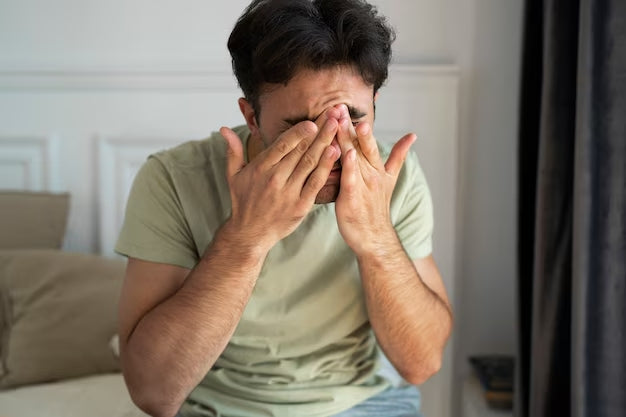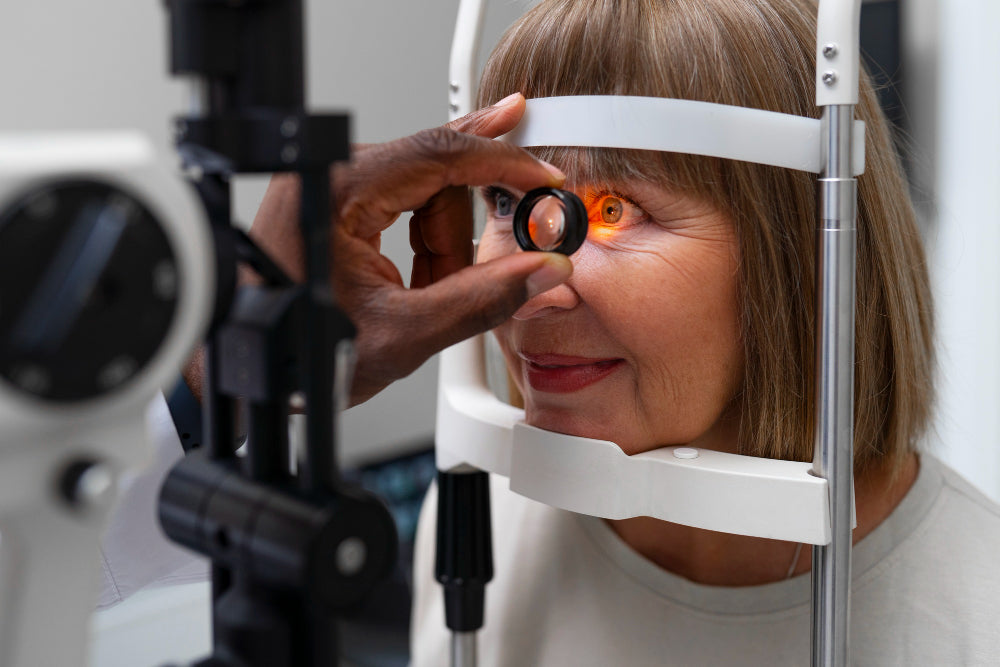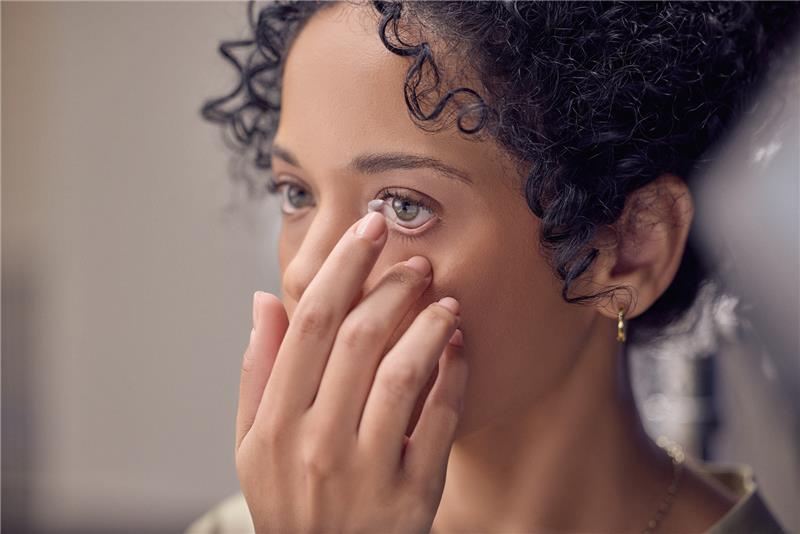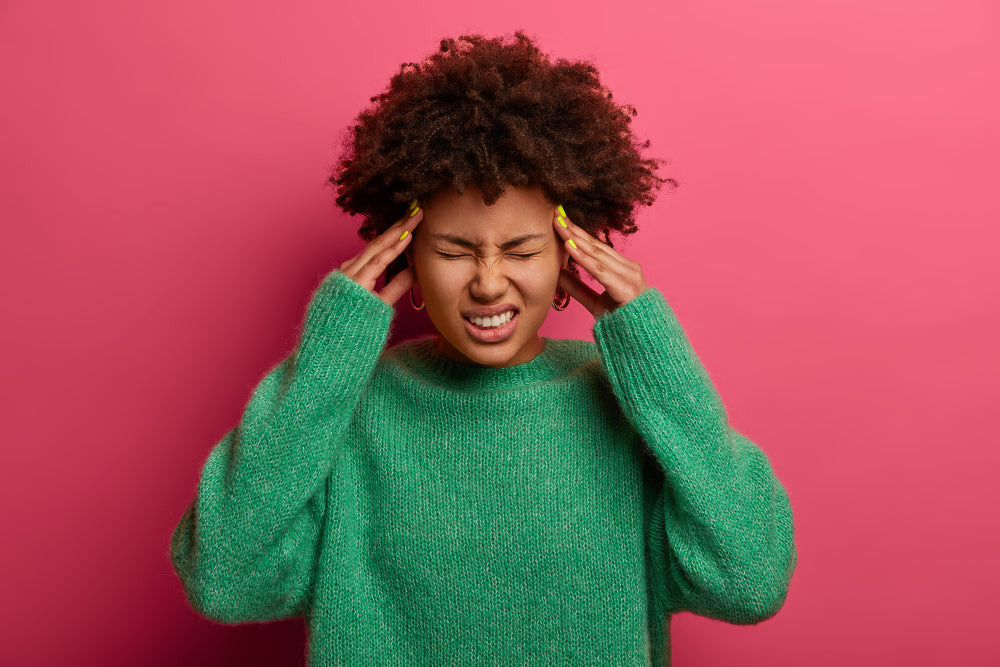Eye allergies can be incredibly uncomfortable, causing redness, itching, tearing, and a burning sensation.
Fortunately, effective and unique ways exist to manage and treat these symptoms. Any allergy is best treated by removing the offending agent, the allergen, from the environment. But this is not always possible. That being said, a trip to the eye doctor can help you identify the most feasible remedy for your particular situation.
This guide explores various approaches to treating and relieving eye allergies so that you can once again enjoy clear, comfortable vision.
Understanding Eye Allergies
An eye allergy is an immune response to an allergen, which leads to inflammation of the conjunctiva. The conjunctiva is the clear tissue that lines part of the sclera and the underside of the eyelid. Eye allergy, also called allergic conjunctivitis, is characterized by:
- Redness
- Itching
- Tearing
Itchy Eyes Got You Down? Breaking Down 6 Types of Eye Allergies

Eye allergies are surprisingly common, affecting millions each year. But with so many different types, figuring out what's causing the itch can be confusing. This section will decode the six most common eye allergies, helping you identify your enemy and find relief.
- Seasonal Allergy (SAC): The Spring and Fall bring a rise in pollen levels when trees, weeds, and grasses release their irritating spores. Think red, itchy eyes with a runny nose as your unwelcome companions.
- Perennial Allergy (PAC): Unlike SAC, PAC is a year-round battle against everyday irritants like dust mites, pet dander, and makeup. Itching and slight redness are common, making it tricky to spot.
- Vernal Keratoconjunctivitis: This one's a heavyweight. More severe than SAC or PAC, it brings intense itching, tearing, and light sensitivity. It predominantly affects young males, and it can occur in females as well, albeit less frequently.
- Atopic Keratoconjunctivitis: This allergy can affect both genders and typically begins in late childhood or early adulthood, persisting into later adulthood. It triggers burning, redness and mucus discharge. Left untreated, it can scar the cornea, so beware!
- Contact Lens Allergy: Have you ever felt like your lenses are burning your eyes? You may have an allergy to the lens materials or cleaning solutions. Redness, itching, and discomfort are your clues.
- 6. Giant Papillary Conjunctivitis (GPC)/ Swollen Inner Eyelid: This severe reaction to contact lens wear causes giant bumps to form on the inner eyelid. The eyelid becomes irritated and swollen, often causing discomfort and itching.
Causes of Eye Allergies
Eye allergies occur when the immune system overreacts to allergens like pollen, dust, or pet dander. The immune response involves the release of histamine. This causes itching, redness, and inflammation. Continuous exposure and frequent rubbing of the eyes can worsen symptoms.
Symptoms of Eye Allergy

Common symptoms include:
- Redness
- Itching
- Tearing
- Swollen eyelids
- Sensitivity to light
- Runny nose
- Mucus in eyes
How to Treat Allergy Eyes?

There are various ways to treat eye allergies. There are home remedies, over-the-counter and prescription medicines. Here’s a look:
At-Home Remedies
- Cold Compress: Apply a cold, clean cloth to closed eyes to soothe irritation. Cool masks are also available that can be cooled in the freezer or fridge.
- Sterile Saline Rinses: Flush out allergens and reduce discomfort.
Over-the-Counter Treatments
- Eye Drops: Artificial tears for lubrication, decongestants to reduce redness, and antihistamines for itching.
- Oral Medication: Antihistamines to relieve overall allergy symptoms.
Note: The effectiveness of some home remedies and over-the-counter treatments may vary among individuals. It is always best to visit the optometrist to determine which remedy is best suited to your unique situation.
Prescription Treatments
- Eye Drops: Mast cell stabilizers, corticosteroids, and NSAIDs for severe symptoms.
- Immunotherapy: Allergy shots for long-term management if symptoms are persistent.
Note: Potential side effects of long-term use of corticosteroid eye drops include increased eye pressure, which may lead to glaucoma, cataracts, or vision impairment. Prolonged use can also increase the risk of infection due to a weakened immune response.
Precautions to Avoid Eye Allergies
- Avoid Pollen: Stay indoors as much as possible during high pollen seasons.
- Protect Eyes: Wear eyeglasses or sunglasses to shield your eyes from allergens.
- Reduce Allergen Exposure: Wash bedding regularly, use air conditioners and a sleep mask
- Clean Environment: Use allergy-proof pillow covers, avoid sweeping, and wash hands after handling pets.
Key Takeaways
Allergens stimulate eye allergies. The key to preventing these allergies is to avoid exposure to specific allergens such as pollen, debris, molds, and mites.
You can find temporary relief by using antihistamines, non-steroid medications, and cool compresses. However, if the symptoms persist, it is advised to visit your optometrist to determine the best course of action for your unique situation.
Remember that red eyes are the primary symptom of eye allergy and the primary symptom of many other eye diseases. Before your condition worsens, it's best to visit your optometrist.
Vision Source Rio has a great team of experts who can help you with all your eye concerns. Schedule an appointment now!
Explore More:
- Are Glaucoma and Cataracts the Same Thing?
- Can High Blood Pressure Cause Flashing Lights in the Eyes?
- What is the Pressure Behind the Eyes? How to Maintain it?





